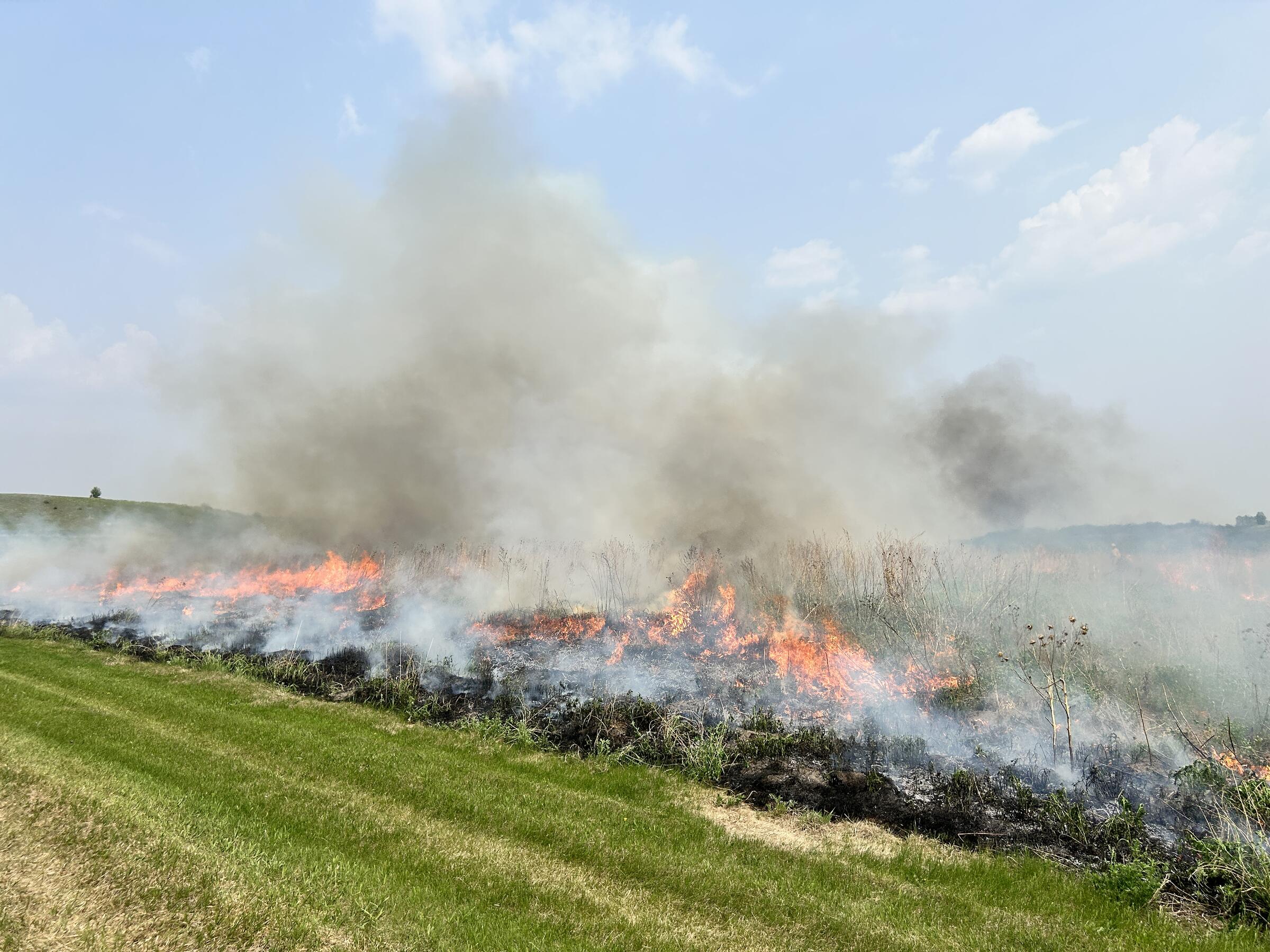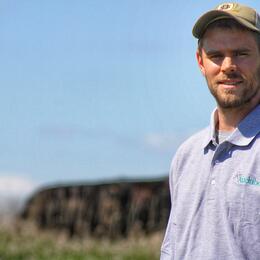Grasslands play numerous important roles in our world.
Grasslands harbor diversity, feed livestock and wildlife, provide for rural livelihoods, offer homes for grassland birds and animals, while the soils and roots underground store carbon, mitigate flooding, and keep our waterways clean by filtering and storing water. Yet, grasslands are often viewed as open, harsh environments that are better used for other possibilities, including energy production (both renewable and fossil fuel based), mineral development and mining, urban development, crop production, or even the development of shelter belts and food plots for wildlife. Each of these developments will impair the function of intact grassland, and can cause harm that cannot be repaired for centuries or millennia, if at all.
A Changing Ecosystem
When early European settlers arrived on the prairies of the Great Plains, the harsh open environment was strange and threatening to people that had become accustomed to more forested environments. In most places on the prairie, trees were confined to riparian areas and thin hillsides that rarely grew enough herbaceous forage to carry fires. Many settlers, with encouragement and support from federal, state, and local governments, planted native and non-native trees for to protect their homesteads, fields, and livestock; to slow the unrelenting winds from carrying away topsoil and offer thermal cover for very hot and very cold weather. Today, a new generation of farmers and ranchers find great value in the foresight of their predecessors, as those same trees are fulfilling many of the dreams the pioneers had for them.
However, the introduction of trees far into a previously treeless ecoregion, combined with suppression of natural fires, has led to one of the fastest ecoregional changes in plant cover and composition on record. The loss of prairies to the plow has been long known, but now the loss of prairie to forest is happening just as fast, as quick growing species like Russian olive, Siberian elm, and eastern red cedar now invade as many acres per year as are converted to annual row crops. While Russian olive and Siberian elm are non-native, eastern red cedar is actually a native species and may be the most aggressive invader in the central plains, as it is well adapted to the climate and soils.
Dealing with Encroachment
Dirac Twidwell with the University of Nebraska Lincoln documents several negative impacts from tree encroachment: loss of forage, increased soil erosion, drop in ground water levels, loss of grassland wildlife, reduced property values and thus reduced tax base, increased tick levels and spread of tick-related diseases, loss of native forb cover and native pollinators, and increased wildfire. These impacts can lead to additional issues, as the loss of forage often leads to overgrazing, whether intentionally-to make the land payment-or unintentionally, by stocking at a historic rate that can no longer be supported. Long term, invasive trees represent a threat to rancher livelihoods as the trees reduce the land’s capacity to produce forage. To reduce the invasion and reclaim land as grassland, landowners work to control trees with herbicides, hand tools, heavy equipment, and browsing animals like goats. Depending on the level of invasion and size of trees, these tools can be effective for small, early invasions, but become expensive, burdensome, or ineffective with moderate to heavy invasions. These treatments must also be repeated regularly as the seed from the initial invasion, as well as neighboring lands, continues to grow and develop a new generation of trees.
Reintroducing fire as a natural tool into grassland management can help control trees and keep grasslands open for all the benefits they bring to our society. Fire can be used as an extension of other tools, or as a standalone tool to address every stage of invasion, from seed dispersal and early recruitment, to growth and reproduction. In fact, fire is the only tool currently available that can provide control at every level of tree encroachment. Although training and equipment is required, fire management can be inexpensive and easy to implement compared to alternative options.
Producers without woody vegetation may consider that fire has no place on their operation. However, fire can be used to contain other invasive species, including cool season introduced grasses like smooth brome grass, quack grass, and Kentucky bluegrass. These grasses spread primarily by underground rhizomes, and while they provide good quantity and quality feed early and late in the growing season, quality declines quickly in mid-summer. Their invasive nature and inefficient water use allows them to monopolize water and light resources in native rangelands before native, nutritious grasses are growing. Range managers often seek to limit their range and presence on portions of their rangelands. To manage these invasions, well-timed fire can damage or kill the top portion of the grass and require the plant to rely on stored carbohydrates from the roots, as well as sending up rhizomes for regrowth. It also levels the playing field by removing accumulated plant material and opening up the canopy for growth of native species. Often fire is best used as part of an integrated system to control these invasive cool season grasses, as rarely are they fully controlled with fire alone.
Where Birds Thrive, People Prosper
By now some of you may be wondering what all of this has to do with birds. After all, birds and trees seem to be the most natural fit. However, grassland birds are negatively associated with tall structures, and that includes trees over a couple meters in height. Grassland bird populations have declined more in the past 50 years than any other group of birds in North America, with the average loss at nearly 50% of the population. Although correlation doesn’t prove causation, the reality that tree cover has expanded on the plains while grassland bird populations have declined certainly gives us reason to believe that trees invading the open landscape threatens the very future of this highly threatened group of birds. The open, expansive nature of prairies allows for effective predator detection and provides ample space for courtship displays and territorial behaviors among grassland bird populations. To ensure healthy habitat for grassland birds, ranchers and grassland managers continue to focus on promoting healthy open grasslands for the benefit of birds, livestock, and people.
Many range managers feel they will not maintain healthy grasslands without fire as one of the tools in the toolbox, as fire has long been a natural and necessary protection for grasslands. It allows grasslands to persist as open, diverse ecosystems. Grasslands have coexisted with fire and the return interval for fires is often much sooner than most expect. For ranchers concerned about maintaining their economic livelihood from grasslands, fire and grazing do not need to be competitive or exclusionary; rather, even in the United States, many ranchers implement both tools on the same acres in the same year when planned carefully.







